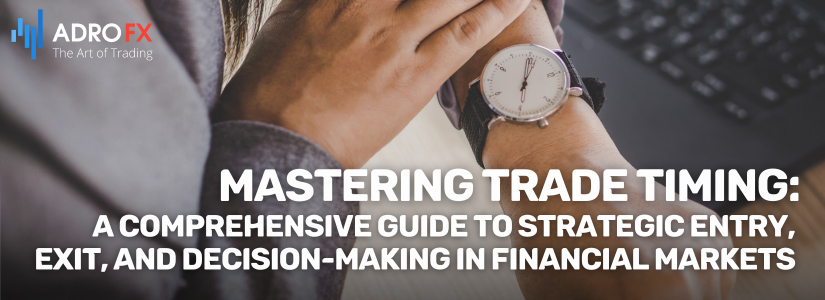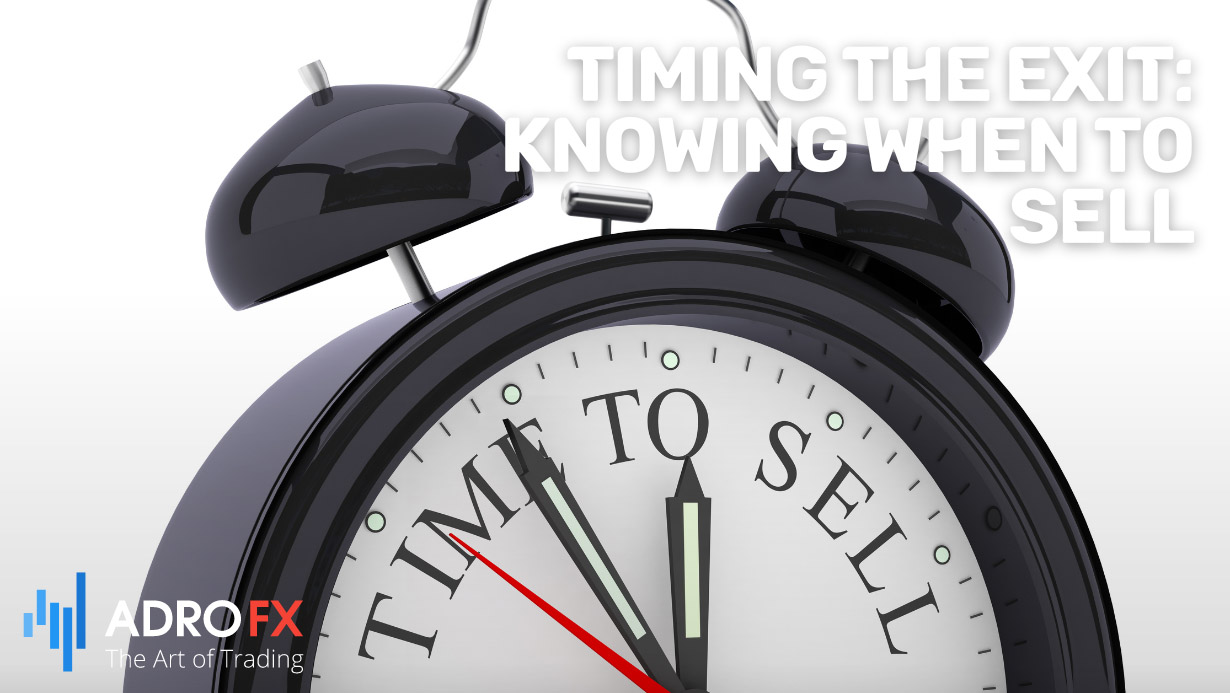Mastering Trade Timing: A Comprehensive Guide to Strategic Entry, Exit, and Decision-Making in Financial Markets

In the dynamic realm of financial markets, success often hinges on the ability to make timely and informed decisions. Central to this skill is the art of knowing when to enter and exit a trade – a pivotal aspect that can either propel traders toward profitable heights or lead them into the depths of financial setbacks. This article delves into the critical elements of timing in trading, shedding light on the paramount importance of mastering entry and exit points. As we navigate through the labyrinth of financial markets, we will explore the nuances of effective buying and selling strategies, unveiling the key considerations that can make the crucial difference between winning and losing trade. Join us on this journey as we unravel the secrets behind strategic decision-making in the world of finance.
Understanding Market Entry Points
Navigating the intricate world of trading involves recognizing opportune moments to enter the market, a skill requiring a blend of analysis, intuition, and strategic thinking. To pinpoint favorable entry points, traders adeptly use key indicators such as moving averages, relative strength indexes (RSI), and stochastic oscillators. These tools offer insights into market trends, enabling traders to interpret signals that suggest optimal entry opportunities. Technical analysis, serving as a fundamental aspect of systematic decision-making, involves scrutinizing price charts, patterns, and trend lines. Traders rely on various technical analysis tools to gain a deeper understanding of market movements, allowing them to navigate charts and graphs effectively. In addition to technical considerations, fundamental factors play a crucial role in identifying robust entry points. Economic indicators, company earnings reports, and geopolitical events influence market sentiment. Traders strategically incorporate fundamental analysis, ensuring a comprehensive approach that considers both technical and fundamental factors when entering the market. As we delve into the layers of market entry, this exploration equips traders with the insights and tools necessary to make informed and strategic decisions, laying the foundation for success in the ever-evolving world of trading.

Timing the Exit: Knowing When to Sell
In the realm of trading, understanding when to exit a trade is as crucial as knowing when to enter. This section explores the multifaceted aspects of strategic trade exits, encompassing signals, risk management, and the psychological nuances involved. Traders keen on maximizing returns pay close attention to signals and indicators signaling optimal exit points. Whether it's identifying overbought conditions through technical indicators or recognizing key patterns, the ability to interpret these signals is instrumental in making timely and profitable exits. Risk management strategies play a pivotal role in determining exit points. Implementing Stop Loss orders, setting profit targets, and adjusting position sizes based on market conditions are integral components of a comprehensive risk management plan. This section delves into the practical applications of these strategies and their impact on shaping effective exit decisions. Beyond technical and strategic considerations, understanding the psychological aspects of knowing when to sell is equally important. Emotions such as greed and fear can cloud judgment, leading to impulsive decisions. Traders need to cultivate discipline and mental resilience to adhere to their exit strategies, mitigating the influence of emotional responses in the face of market fluctuations. As we navigate the intricacies of timing the exit, this section provides insights into the holistic approach required for successful trade exits. From recognizing signals to implementing risk management and mastering psychological resilience, traders will gain a comprehensive understanding of the dynamics involved in knowing when to sell.
Buying and Selling Strategies
Effectively navigating the dynamic landscape of trading necessitates a deep understanding of various buying and selling strategies. Traders deploy these strategies based on their objectives, risk tolerance, and market conditions, influencing their decision-making processes.
Common Trading Strategies
Numerous trading strategies exist, each with its own set of principles and applications. From trend following to mean reversion, breakout, and momentum strategies, traders choose approaches aligned with their market outlook and risk appetite. These strategies guide traders in making informed decisions and optimizing the potential for profitable outcomes.
Day Trading, Swing Trading, and Long-Term Investment Approaches
Traders often categorize themselves into distinct timeframes, each requiring a tailored set of strategies. Day trading involves executing trades within a single trading day, capitalizing on intraday price movements. Swing trading spans a few days to weeks, capitalizing on short to medium-term trends. Long-term investment strategies, on the other hand, involve holding assets for an extended period, relying on fundamental analysis and a belief in the asset's long-term growth potential.
Aligning Strategies with Market Conditions
Adapting to ever-changing market conditions is paramount for successful trading. Strategies that thrive in trending markets may falter in ranging or volatile conditions. Traders need to be flexible, choosing strategies that align with prevailing market conditions. Recognizing shifts in market dynamics and adjusting strategies accordingly allows traders to maintain a nimble and adaptive approach. As traders explore the realm of buying and selling strategies, this section provides an in-depth examination of the diverse approaches available. By understanding common strategies, exploring different timeframes, and recognizing the importance of aligning strategies with market conditions, traders can develop a versatile toolkit to enhance their decision-making capabilities in the world of trading.

Risk Management in Trading
Integral to the entire spectrum of trade entry and exit strategies is the pivotal role played by risk management. It serves as the linchpin that ensures traders can navigate the volatile terrain of financial markets while safeguarding their capital. Managing risk in trade entry and exit begins with the implementation of well-defined strategies. Traders carefully consider the placement of Stop Loss orders, establishing predetermined points where a losing trade will be exited. Simultaneously, Take Profit strategies are deployed to secure gains, enabling traders to capitalize on favorable market movements. Stop Loss and Take Profit strategies are not arbitrary decisions; they are calculated based on the careful assessment of risk-reward ratios. By setting these ratios, traders establish a framework that guides their decision-making process. This involves weighing the potential losses against potential gains, ensuring that the overall risk exposure is controlled and aligned with the trader's risk tolerance. Recognizing the significance of risk management in trade entry and exit is paramount for traders seeking longevity and sustainability in the markets. It acts as a shield against unexpected market movements, providing a structured approach that promotes prudent decision-making. As traders delve into the intricacies of managing risk, they fortify their trading endeavors, enhancing the effectiveness of their entry and exit strategies.
The Role of Technical Analysis
In the intricate world of trading decisions, technical analysis stands as a powerful tool, providing traders with a systematic approach to understanding market dynamics. Delving deeper into this analytical method reveals its multifaceted nature, encompassing chart patterns, trendlines, and an array of technical indicators. By interpreting these elements, traders gain valuable insights into market trends and potential entry and exit points, aiding them in making well-informed and timely decisions. Technical analysis not only serves as a means of interpreting historical price data but also acts as a forward-looking mechanism. Traders leverage chart patterns and trendlines to anticipate potential market movements, contributing to the effective timing of trades. The comprehensive use of technical analysis enables traders to navigate the complexities of market behavior, fostering a proactive approach to decision-making.
Fundamental Analysis and Its Impact
In tandem with technical analysis, fundamental analysis plays a crucial role in shaping trading decisions. Understanding the significance of fundamental factors, such as economic indicators and news events, is key to grasping the broader market landscape. Traders delve into economic data, earnings reports, and geopolitical developments to gauge the underlying health of assets and markets. Fundamental analysis provides a broader context for trading decisions, influencing the overall market sentiment. Integrating both technical and fundamental analyses allows traders to make well-rounded and informed decisions. By recognizing the interplay between these two analytical approaches, traders gain a comprehensive understanding of market conditions, contributing to a nuanced and strategic approach to entry and exit points.
Emotional Discipline in Trading
The psychological dimensions of trading wield a significant influence on decision-making, especially in the turbulent waters of financial markets. Acknowledging these aspects is imperative for traders aiming to navigate volatile periods with resilience and composure. Maintaining emotional discipline requires self-awareness and the cultivation of strategies to cope with the highs and lows of trading. Tips for preserving emotional discipline during market fluctuations include setting realistic expectations, acknowledging and managing stress, and refraining from impulsive decisions driven by fear or greed. Additionally, the role of a well-defined trading plan cannot be overstated. Establishing clear guidelines and contingency measures within a trading plan provides a structured framework that helps traders stick to their strategies and withstand emotional pressures.
Case Studies and Examples
Real-world examples serve as valuable learning tools, offering insights into the practical application of trade entries and exits. By presenting instances of successful strategies across different markets, traders can glean valuable lessons. These case studies not only showcase effective buying and selling strategies but also delve into the nuances of decision-making in diverse market conditions. Analyzing both successful and unsuccessful trades provides a holistic perspective on the intricacies of trading. It allows traders to identify patterns, refine their strategies, and continuously improve their approach. Case studies and examples serve as a dynamic repository of experiences, enriching traders with practical knowledge and contributing to their growth and proficiency in the realm of trade entry and exit points.
Conclusion
As we conclude this exploration of when to enter and exit a trade, key takeaways underscore the importance of a disciplined and informed approach. Successful trading involves a nuanced understanding of technical and fundamental analyses, risk management, and emotional discipline. Encouraging traders to embrace continuous learning and adaptation to evolving market conditions, this article reinforces the value of a well-defined trading plan. In the dynamic world of trading, disciplined decision-making, coupled with a commitment to ongoing improvement, forms the bedrock of enduring success.
About AdroFx
Established in 2018, AdroFx is known for its high technology and its ability to deliver high-quality brokerage services in more than 200 countries around the world. AdroFx makes every effort to keep its customers satisfied and to meet all the trading needs of any trader. With the five types of trading accounts, we have all it takes to fit any traders` needs and styles. The company provides access to 115+ trading instruments, including currencies, metals, stocks, and cryptocurrencies, which make it possible to make the most out of trading on the financial markets. Considering all the above, AdroFx is the perfect variant for anyone who doesn't settle for less than the best.










